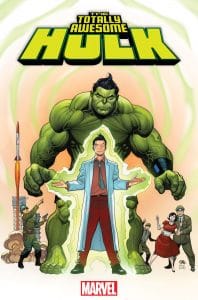 For the sixth consecutive month*, Marvel comic sales are down year-over-year. Specifically, comic sales were down 11.3%, while graphic novel sales were down 17.2% vs. the previous year. So…that’s not good.
For the sixth consecutive month*, Marvel comic sales are down year-over-year. Specifically, comic sales were down 11.3%, while graphic novel sales were down 17.2% vs. the previous year. So…that’s not good.
Marvel still has the #1 market share, but the spread between the Big Two is getting slim compared to a year ago when Marvel was carrying a 17% lead (it is now 4%). Ironically, Marvel had some big individual issues in April 2017, including Secret Empire #0, X-Men Gold #1, and X-Men Blue #1, all 100K+ sellers. Still, that’s wasn’t enough to push back the decline as Marvel didn’t have a single graphic novel in the Top 10 (clearly, people aren’t buying what Marvel is collecting).
I’ve previously written about the decline of Marvel sales and since us nerds are passionate lifeforms, I expect to get nitpicked with “um, actually”s quite vigorously. However, I do not expect to be nitpicked for something I never said, nor if it is clear that the commenter only skimmed the headline.
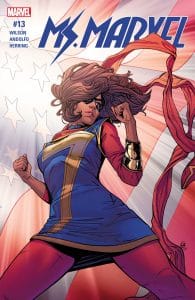 In that article I listed several reasons for the decline of Marvel comics, including the glut of crossovers that has turned off fans. No where among those reasons did I mention the diversity of characters as an issue, although at the end of the article I wrote:
In that article I listed several reasons for the decline of Marvel comics, including the glut of crossovers that has turned off fans. No where among those reasons did I mention the diversity of characters as an issue, although at the end of the article I wrote:
“I’m enjoying some of their more diverse titles that are also relatively self-contained and free from frequent crossovers. Jason Aaron is doing the best Thor since the Walt Simonson days, Squirrel Girl is a ray of sunshine, Luke Cage and Iron Fist is a lot of fun, and I’m undoubtedly on the Ms. Marvel bandwagon.”
Within minutes of the article going live, readers were projecting the rise of diverse characters as the capital-R Reason for the decline in comic sales. I double checked what I had written, then triple checked it, then checked the rest of the page for the words “diversity.” The above paragraph was the only place it appeared in any form. Sure enough, a headline was only skimmed and a rationale that I had never actually written was being projected!
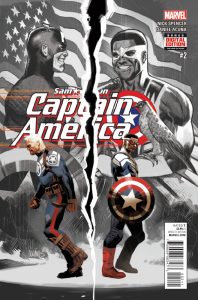 “Oh boo-hoo,” You may say, “Welcome to the internet, where baseless accusations and “um, actuallys” appear like so many Skrulls** in the 616.”
“Oh boo-hoo,” You may say, “Welcome to the internet, where baseless accusations and “um, actuallys” appear like so many Skrulls** in the 616.”
“Yes, but” I reply, “these comments jumped to a conclusion I didn’t make and ignored those I did!”
To add insult to injury, a few commenters starred the early commenter, piling on and agreeing with a conclusion of the article that I didn’t write. Those stars were like a pat on the back for the original commenter without checking whether it was actually present in the article at all. I’m half tempted to list them here for reasons of shaming and pettiness, but I shall not because, painfully, even a couple of my once-trusted colleagues at Nerds on Earth participated in the online chanting.
Et tu, Earth Nerds?
Frankly, I didn’t want to step on a landmine, so I had avoided talking about the issue of diversity in comics as a reason for the decline in sales and instead merely stated that I personally*** enjoyed many of the current Marvel titles that were considered a core part of the new slate of diversity titles.
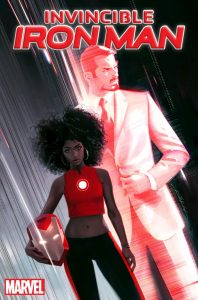 Ironically, by not personally declaring that I thought it was a reason, I had stepped in a minefield clearly armed by headline skimmers who felt certain that diverse titles were the primary reason for declining Marvel sales. Shucks.
Ironically, by not personally declaring that I thought it was a reason, I had stepped in a minefield clearly armed by headline skimmers who felt certain that diverse titles were the primary reason for declining Marvel sales. Shucks.
So let’s specifically talk about that issue for a bit.
Objectively, when talking about diverse characters (like the Muslim teenager Ms. Marvel), it’s very difficult to point at a title and draw a line in the sand with sales data. For example, in April 2017 Ms. Marvel sold 20,800 copies, which was 11,000 less than the Invincible Iron Man that stars the new African American teenage female replacement for Tony Stark, and 4,000 copies more than Hawkeye, the caucasian male Avenger who has been a fan-favorite character for decades.
The fact is that some of the “All New, All Different” titles that feature new diverse characters sell well and some don’t. Likewise, some of the old tried-and-true white male characters sell well and some don’t (looking at you Kingpin, Bullseye, Silver Surfer, etc., all poor sellers). So if you are making an argument that Marvel’s move toward more diversity is the primary cause for their sales decline, then it isn’t an argument that is made objectively with sales numbers.
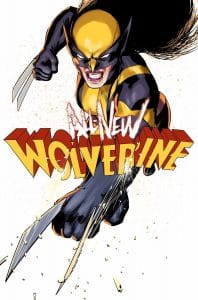 But Marvel has made one critical mistake in terms of diversity: they’ve ridden the wrong rails to get there. And this is largely based upon the financial and business corner they painted themselves into.
But Marvel has made one critical mistake in terms of diversity: they’ve ridden the wrong rails to get there. And this is largely based upon the financial and business corner they painted themselves into.
It’s pretty easy to see that Marvel hasn’t really created many new diverse characters. Instead, they’ve guillotined decades old legacy characters and replaced them with a new diverse hero who took up their mantle. This largely hasn’t worked because instead of injecting fresh creativity into the 616, it only served to alienate long-time readers who value continuity. It’s not like old school readers like me dislike Sam Wilson (we love him!), we just want our Steve Rogers too (preferably not as a Nazi, thank you very much).
In short, if you want to introduce diverse characters, then create diverse characters, don’t jettison your old ones and just stuff a new one into the old mask. Don’t retcon the originals; expand the universe with fresh faces that make others feel welcome.
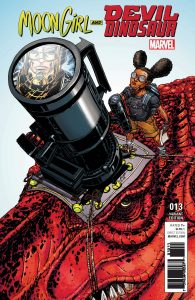 But whole cloth creating a new characters is difficult, largely because Marvel’s previous business practices have made it so. You want your best talent on such a project, but the creator wouldn’t have a share in the rights (IP) of that character, so what is the incentive for them? For a freelancer to do all the heavy lifting for little pay and no health insurance–only to see Marvel pull in millions later when the character hits the screen and is made into an action figure–is a tough sell. Business is business, but it has creative consequences.
But whole cloth creating a new characters is difficult, largely because Marvel’s previous business practices have made it so. You want your best talent on such a project, but the creator wouldn’t have a share in the rights (IP) of that character, so what is the incentive for them? For a freelancer to do all the heavy lifting for little pay and no health insurance–only to see Marvel pull in millions later when the character hits the screen and is made into an action figure–is a tough sell. Business is business, but it has creative consequences.
Further, IP issues are at stake, namely that in order to hold onto the trademarks, Marvel needs to use the characters within a reasonable time period, or (lord forbid) risk losing the sole corporate ownership rights. So there is a financial incentive to keep dredging up the dregs from those old second stringers.
Rob Salkowitz, author of the excellent Comic-Con and the Business of Pop Culture, says it perfectly: “With the “create something new” option largely off the table in terms of originally-named, costumed characters, and most of the legacy characters in their IP portfolios consisting of straight white men created for a less-woke world, the only real solutions to address diversity are to dust off a disused character or revamp a front-liner.”
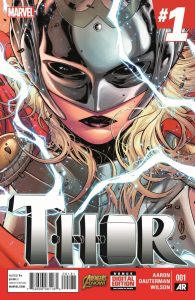 Salkowitz continues: “The inability to create new in-continuity characters creates a zero-sum game for DC and Marvel. Either stick with the tried-and-true straight white-guy versions of the pantheon and alienate new readers, or screw around with iconic characters and alienate older ones. Strategy A works in the Direct Market [comic shops] but not the wider world; strategy B works in the media, the bookstores and in the blogs, but causes problems in the comic shop.”
Salkowitz continues: “The inability to create new in-continuity characters creates a zero-sum game for DC and Marvel. Either stick with the tried-and-true straight white-guy versions of the pantheon and alienate new readers, or screw around with iconic characters and alienate older ones. Strategy A works in the Direct Market [comic shops] but not the wider world; strategy B works in the media, the bookstores and in the blogs, but causes problems in the comic shop.”
Contract negotiations are a can of worms when new characters might eventually lend their mugs to coffee mugs, so it’s the path of least resistance to try a fresh coat of paint on an old but secure trademark. So good grief, let’s not blame Riri Williams or Jane Foster for this.
Let’s make one final point: Moon Girl and Devil Dinosaur sells like garbage in comic shops (less than 8,000 issues in April 2017), but it was front and center in a collected edition at my daughter’s elementary school book fair, where she and her classmates were drooling over it. New readers aren’t discovering that character in comic shops, they are discovering in the Barnes and Noble graphic novel section and from Scholastic school book fairs. Do not underestimate the rise of YA literature in last few years. Comic shops haven’t fully caught up to that but the general market sure as heck has. (My daughter also loves her Squirrel Girl YA books, but that’s another title that doesn’t sell well in comic shops.)
 My conclusion: new diverse characters are absolutely not to blame for the decrease in Marvel com sales. The reality of the sales data is that some of these characters sell better than others, and that is largely predicated on the strength (quality) of the story, its positioning in the YA market, and if the title is largely allowed to be free of crossovers or relaunches that only serve to slow momentum, not pull in new customers.
My conclusion: new diverse characters are absolutely not to blame for the decrease in Marvel com sales. The reality of the sales data is that some of these characters sell better than others, and that is largely predicated on the strength (quality) of the story, its positioning in the YA market, and if the title is largely allowed to be free of crossovers or relaunches that only serve to slow momentum, not pull in new customers.
This is backed up by Tony Hoagland (co-owner of my FLCS) who is quite pleased with how diverse characters are bringing in new readers but is “not willing to take any more chances on Marvel,” being that (in his opinion as a shop owner) they consistently and constantly relaunch titles that are already overpriced in both floppy and trade editions. Marvel is confusing and frustrating their own buyers, in other words.
I’ve been reading Marvel comics for over 30 years and I’ve been studying the comic book market heavily since 2009, so I know for a fact that the issues in the comic industry go well beyond titles with diverse characters. But those problems are an article for another day and it doesn’t come with a headline that can just be skimmed.
___
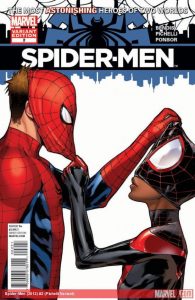 *Estimates of actual sales via Diamond U.S. from comic shops (Note: not general YA markets) for comics and graphic novels shipped during April 2017.
*Estimates of actual sales via Diamond U.S. from comic shops (Note: not general YA markets) for comics and graphic novels shipped during April 2017.
**Um, actually, I should have probably used Chitauri, the alien invaders who were from the Ultimate line and were introduced in the Avengers movie to serve as a stand-in for the Skrulls, who may be coupled with Fox’s rights agreement with the Fantastic Four.
***In fact, many other commenters expressed that they personally enjoyed the diverse titles, but tepidly expressed that they were also wary of stepping on a landmine.

